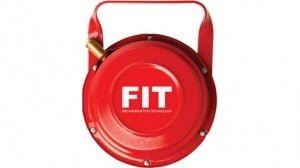
Fire Interruption Technology
Actualizado a fecha: 2 December, 2018
It is no secret that firefighting is a dangerous occupation. Year after year, firefighters across the world are killed or injured while on duty, and statistics show that the majority of these deaths and injuries occur during common structure fires. Today, there is an innovative new firefighting tool specifically designed for first responders to use in structure fires that can greatly decrease the danger to them.
Structure fires. Aerosols work best in contained spaces. Just like Halon or other gaseous fire suppressants, if there isn’t a sufficient volume of aerosol near and around the fire, effectiveness is reduced. The FIT-5 is designed to protect a space up to 1,700 cubic feet (60m3). In a larger or highly ventilated space, more than one device may be needed.
First response. The FIT-5 has applications for all responders who can deploy the device to reduce risks associated with fighting the fire while limiting the loss of human life and property. FIT-5 deployments can be extremely useful for smaller volunteer departments, where the chief or deputy chief often arrives first on the scene only to have to wait several minutes for members to get outfitted and arrive. The FIT-5 serves as an early deployment device that will knock down the fire and buy time for volunteers to arrive.
Basement fires. Fires in confined spaces below ground are some of the most challenging to attack and present significant risks to firefighters. Deploying a FIT-5 in a basement fire situation will make that space much safer for firefighter entry and overhaul.
Vehicle fires. If a burning vehicle contains trapped victims or if the vehicle fire threatens adjacent structures, FIT-5 can be used to knock down flames within the vehicle, providing valuable time for people to be rescued and for firefighters to reduce fire spread and extended damage of property.
RIT rescues. The FIT-5 could serve as a valuable tool to the rapid intervention team (RIT). If a firefighter has succumbed to heat or smoke or is threatened by flashover, the ability to knock down flames and reduce the temperature by up to 800°F in 15 seconds allows the team to perform safe entry and rescue.